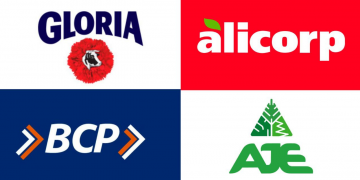Crédito: fuente
Job loss numbers skyrocketed during the COVID-19 pandemic, but not everyone was counted as unemployed. Here’s how the unemployment rate is measured.
USA TODAY
Even though Congress struck a COVID-19 stimulus deal late Sunday to extend badly needed financial relief to millions of jobless Americans, some could see their unemployment benefits lapse since it may take weeks for aid to reach them due to outdated state systems, experts say.
The lag could affect 12 million Americans who were set to lose their jobless aid the day after Christmas if Congress didn’t pass new legislation. The House and Senate are expected to debate and vote on the package Monday.
“We’re too far gone,” says Elizabeth Pancotti, a policy adviser at the pro-worker Employ America. “We would have needed a deal before Thanksgiving for there not to be a lapse in benefits.”
‘It’s a big scary mess’: 12 million Americans to lose jobless aid after Christmas if Congress fails to act
How long will it take?
For those whose benefits were going to expire on Dec. 26, their regular benefits and extra $300 supplement could face delays for at least three weeks, or a maximum of six to eight weeks in some states, Pancotti estimates.
“People will expect to see the extra $300 hit the first week of the year, but that’s not going to happen,” she says.
Why? It is because of difficulties in programming new benefits into the computer system during the holidays, according to Michele Evermore, senior researcher and policy analyst for the National Employment Law Project.
The longstanding neglect of state administrative systems has meant that state programs don’t have the resources and technology needed to add programs instantly, adds Evermore, who anticipates that it will take at least two to three weeks before states are up and running with the new aid.
“We’re just one week from expiration. Maybe a handful of states could pull off a miracle since they knew this was coming down the pipeline,” Evermore says. “But they can’t engage the system until it’s official.”
What are the two programs?
In March, the CARES Act created two programs to help keep jobless workers afloat after the coronavirus pandemic battered the global economy and led to a historic wave of unemployment. The two programs were set to end on Dec. 26.
The first was the Pandemic Unemployment Assistance program, which provides aid to self-employed, temporary workers and gig workers. It had also included a $600 weekly supplement for jobless workers through late July.
Many out-of-work Americans have already used up their state unemployment aid, which typically expires after six months. Now they have transitioned to the Pandemic Emergency Unemployment Compensation program, which provides an additional 13 weeks of benefits beyond the typical 26 weeks that states provide to jobless workers.
Only 2.9 million of those running out of PEUC will be able to collect extended benefits – which last an additional 13 to 20 weeks – in 2021, but states will have to pick up half of the cost at a time when their trust funds are depleted, according to The Century Foundation, a think tank.
For those currently on extended benefits, it could take three to four weeks before they receive the extra $300, according to Pancotti.
States wait for guidance
With Congress set to pass an extension of the programs, states will have to wait for the Labor Department to issue guidance before sending out payments, which could prove challenging during the holidays.
It could take states a few weeks to restart the weekly jobless supplements, unemployment experts say, an issue that happened in the spring when it took many states more than a month to roll out the extra $600 weekly benefit in the spring, which ended in late July.
States also faced weeks of delays in August when President Donald Trump extended the bonus to $300 a week for roughly six weeks for most workers.
Benefits will be restored
The takeaway for unemployed Americans is that they may have to wait through part of January to get access to benefits that stopped at the end of December. Benefits are typically restored beginning the date of enactment, so there shouldn’t be a gap in someone’s eligibility, just a gap in when they will get paid, Evermore said.
With savings badly depleted, American families will be at high risk for food insecurity and loss of their homes, and many may be unable to pay for health care during the pandemic, experts caution.
“My biggest concern is that some struggling Americans may panic if they stop getting an unemployment check and do something drastic like sell their car,” says Evermore. “I want them to know that they will still get their checks, it just may take a few weeks.”
Read or Share this story: https://www.usatoday.com/story/money/2020/12/21/covid-19-relief-deal-stimulus-unemployment-benefits-delay/3945628001/








